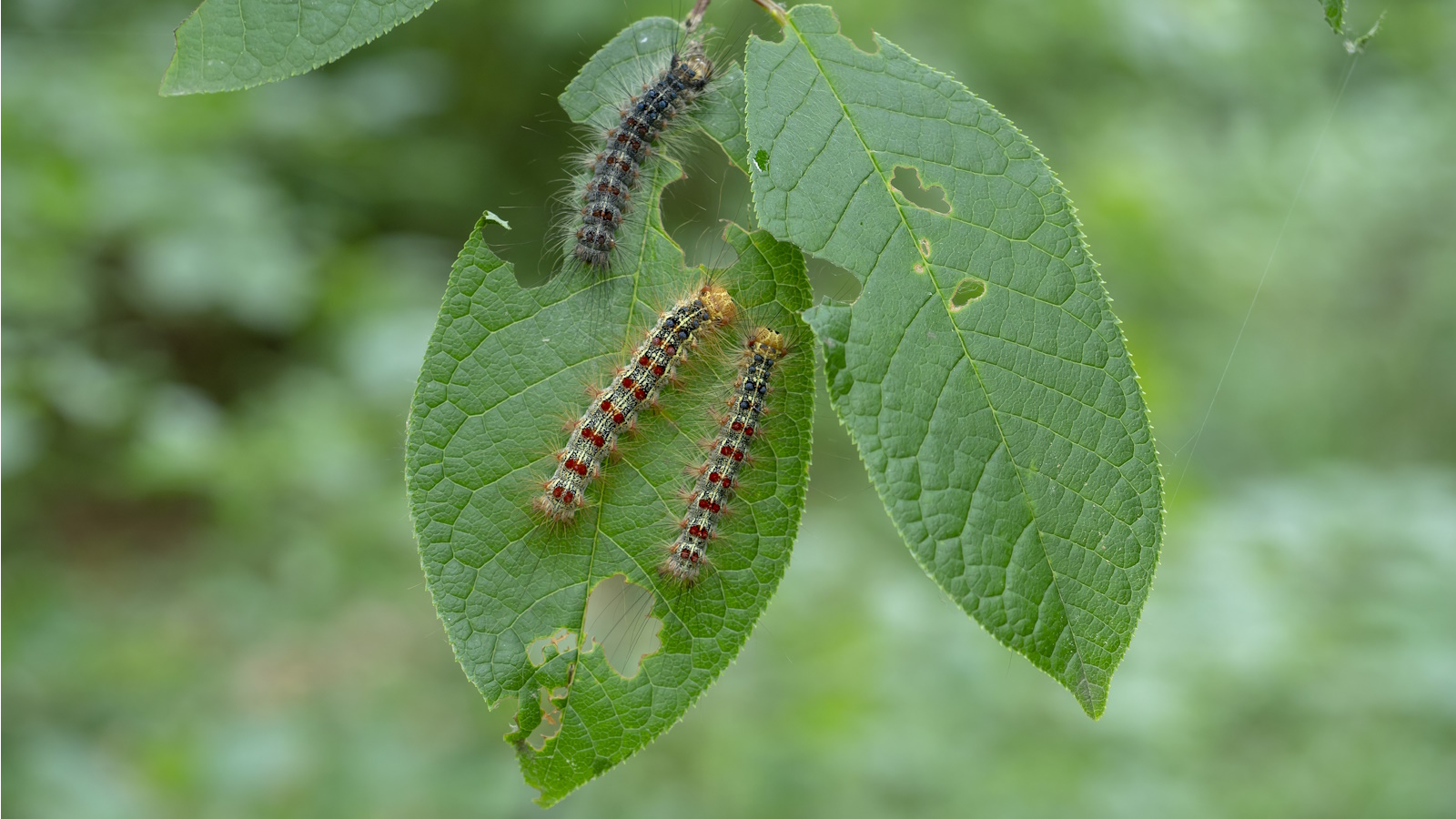
It's no secret that dealing with pests in the backyard is part and parcel of being a gardener. It can be a nuisance to see curious critters takeover your carefully curated planting and cause damage.
Among those pests are gypsy moth caterpillars, also known as spongy moth caterpillars, who like to munch on foliage. Just like repelling cicadas, it's important to get rid of these pests if you want to keep your trees and shrubs healthy and safe. Luckily, there are a few methods to get rid of these caterpillars, such as using spices to deter common garden pests.
We've spoken to experts to find out more about the damage these pests cause and how to get rid of gypsy moth caterpillars for good.
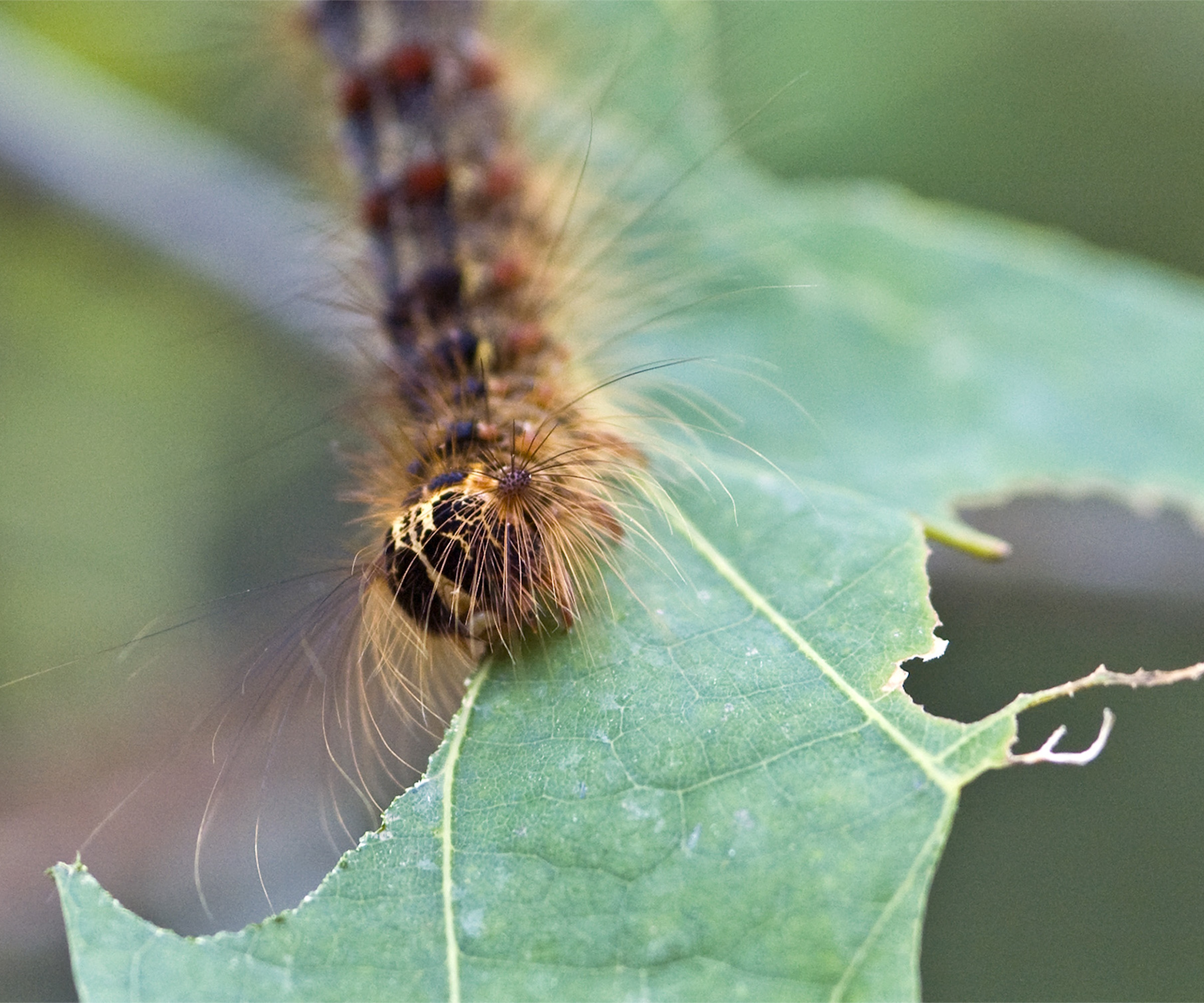
What damage do gypsy moth caterpillars cause?
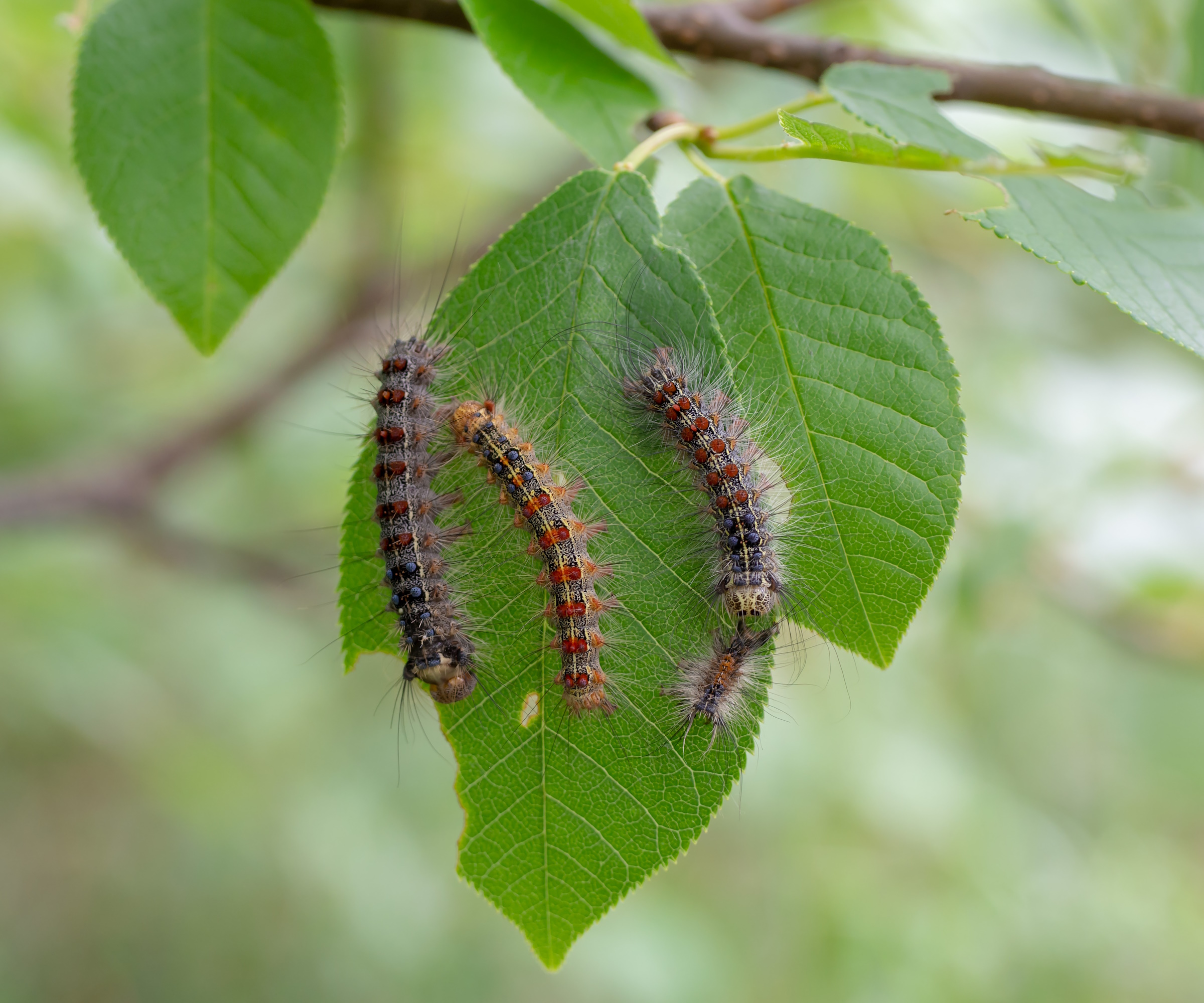
One sign that you have gypsy moth caterpillars in your yard is if your tree and shrub leaves have holes in them where these critters have taken a bite.
'Gypsy moth caterpillars can cause significant damage to plants, especially trees. They are voracious eaters and can defoliate entire trees, leaving them vulnerable to disease, drought and other stresses,' says Jana McDaniel, pest control expert and founder of First Saturday Lime.
'Their preferred hosts are oak, apple, birch, and willow trees, but they will feed on many other types of plants as well,' she adds.
Similar to how plants are affected by a cicada infestation, your woody trees and shrubs are a target for spongy moth caterpillar damage. That's why it's important to know how to get rid of them to protect your plants.
How to get rid of gypsy moth caterpillars
Pest control experts recommend a few different ways to get rid of gypsy moth caterpillars, so that you can protect your plants from further damage and have a thriving backyard. Discover 5 ways to get rid of these pests below.
1. Place gypsy moth caterpillar eggs in soapy water
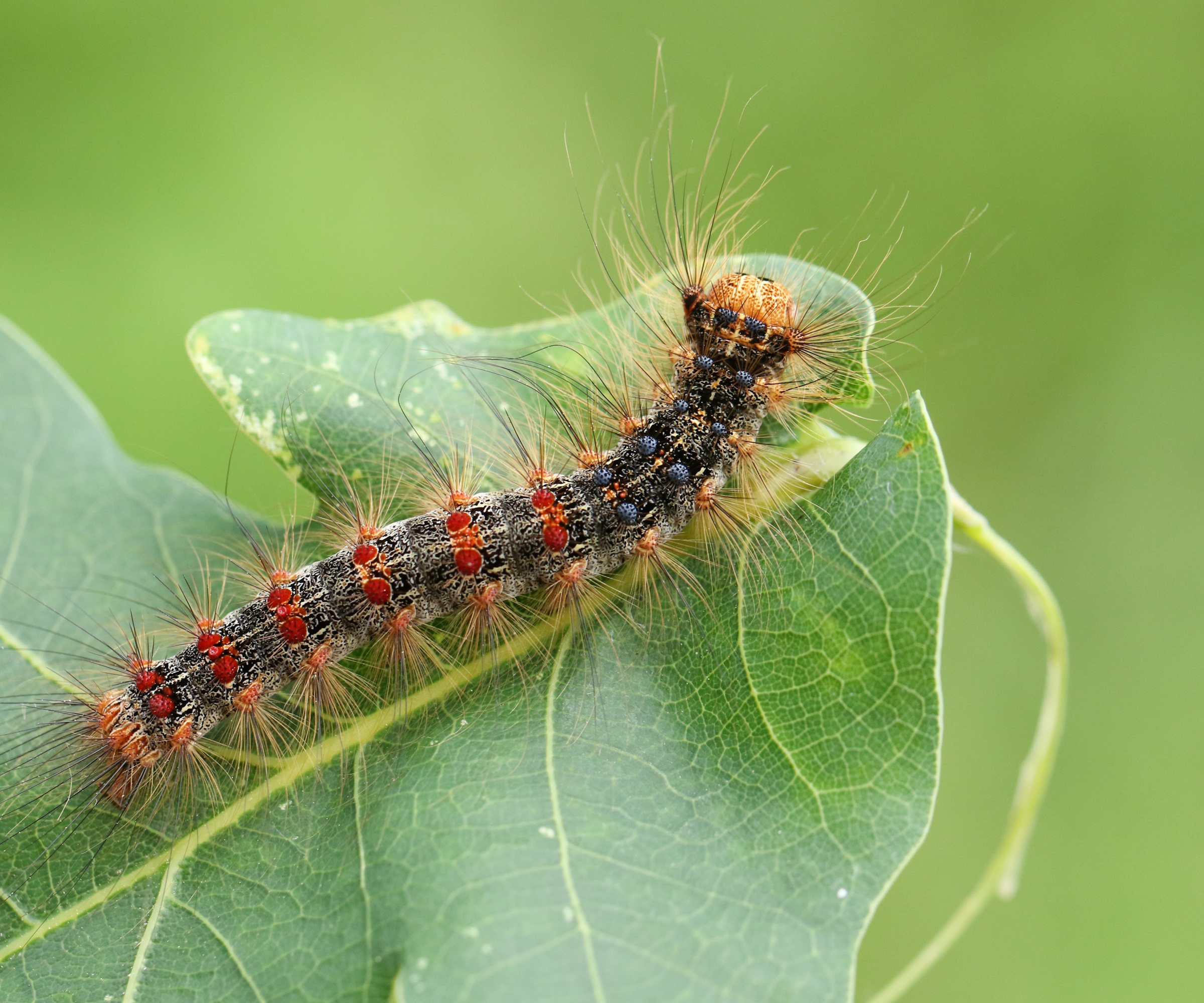
The first point of call to get rid of gypsy moth caterpillars is removing any eggs before the caterpillars emerge.
'Familiarize yourself with the physical description of the pest - eggs, larvae (caterpillars), pupae and adults (moths),' says entomologist Dr. Tracy Ellis.
Dr. Tracy recommends surveying your yard weekly and using a bucket of soapy water and a putty knife, like this putty knife from Amazon, to remove and kill any eggs.
'You can use your putty knife to destroy clusters of eggs on the tree bark in late April and put them in the soapy water bucket where the soap will kill them,' she says.
'You should leave the eggs soaking in the bucket for at least two days,' notes Rocky Beninato, pest control expert and founder at Quality Affordable Pest Control.
Soap is a common ingredient for homemade bug sprays as it causes insects to dry out. Dr. Tracy notes that you can also place the caterpillars and moths in soapy water as a solution to get rid of them.
2. Place sticky barriers around tree trunks to capture the caterpillars

Another method is to capture gypsy moth caterpillars before they have a chance to reach your plant's foliage.
'Placing sticky barriers or traps around tree trunks will capture climbing caterpillars,' says Jana.
Like getting rid of thrips, using sticky traps is an effective solution. Often these traps are yellow to attract pests, with an adhesive coating that they become stuck to. This is also a great way to deal with common houseplant pests.
You can find a range of sticky insect traps in different shapes and sizes online, like this roll of tree sticky trap from Amazon.
3. Introduce natural predators to control gypsy moth caterpillar populations
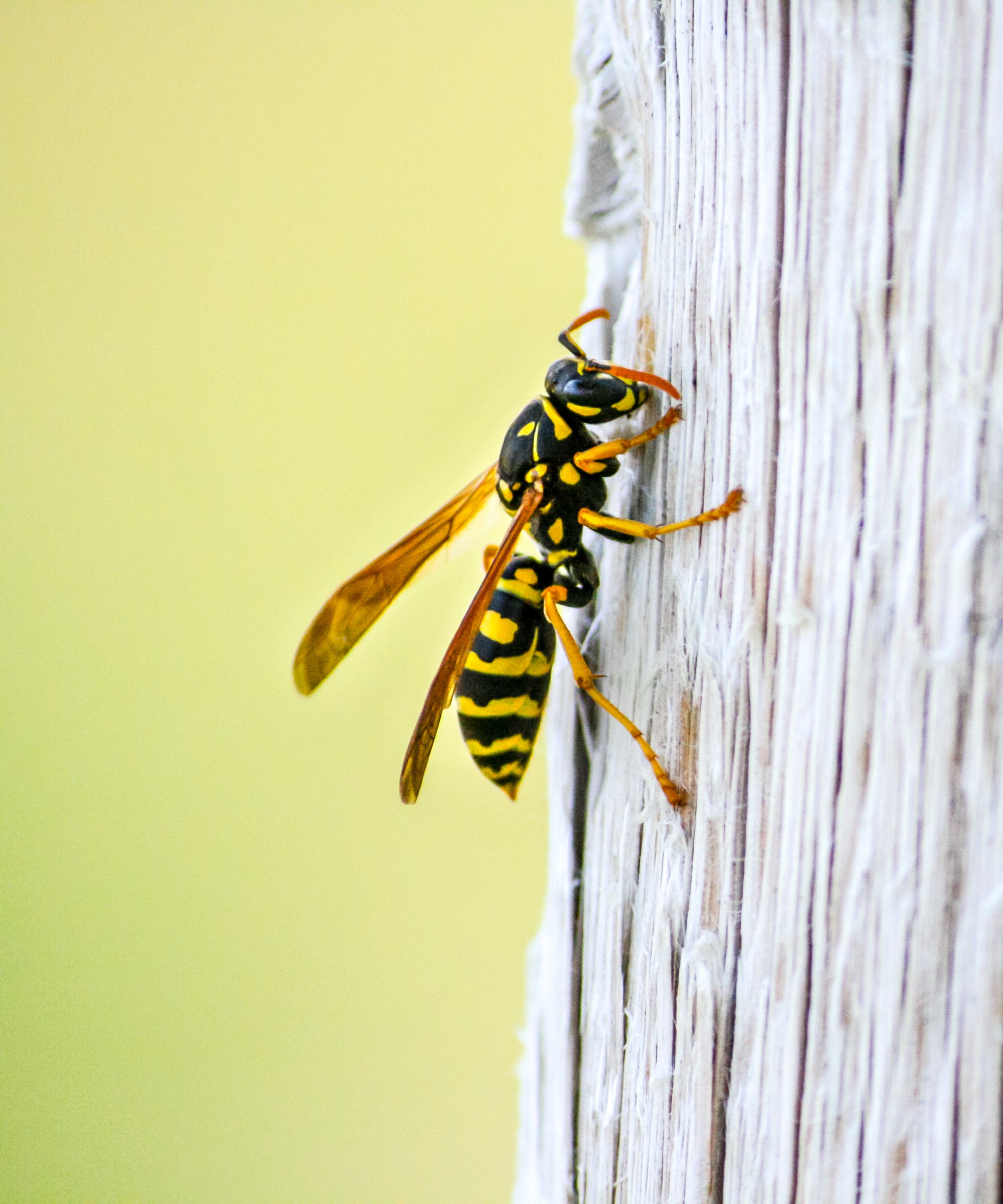
You can also let nature take its course by introducing natural predators that target and kill spongy moth caterpillars.
'Introduce natural enemies like parasitic wasps or flies that target the caterpillars,' says Jana.
There are plenty of beneficial insects that you may find in your yard, like different types of bees and insects that can help keep those unwanted pests away. Like getting rid of squash vine borers, introducing parasitic wasps to prey on eggs and larvae will help control gypsy moth caterpillar numbers.
'Burlap wraps around the tree deter the larvae from crawling up the trunk where they can be collected daily and placed in soapy water,' suggests Tracy.
4. Remove fallen leaves from under your trees and shrubs
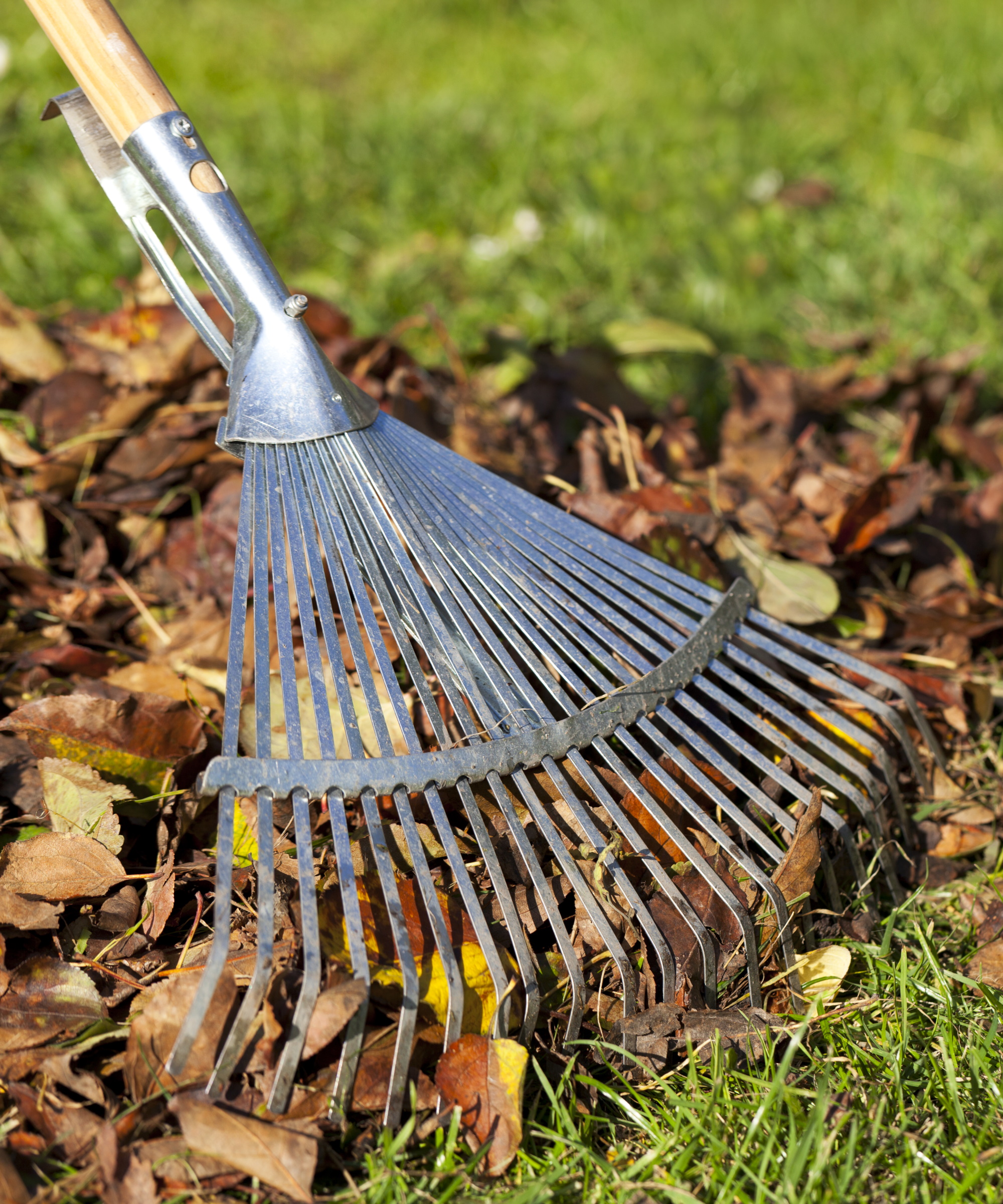
If you want to discourage spongy moth caterpillars, making your yard an unfavorable environment is the way to go.
'Raking and destroying fallen leaves and pupae will help disrupt the lifecycle,' says Jana.
Gypsy moths will lay eggs on fallen leaves while the caterpillars are attracted to them as a food source. Getting rid of fallen leaves will discourage these pests and remove any eggs.
You can use essential gardening tools to do this, like this garden rake from Amazon.
5. Choose repellent plants for your yard

Just like mouse repellent plants and snake repellent plants, there are also a handful of plants that will naturally repel gypsy moth caterpillars.
'Certain trees have their own natural repellents because they are just not palatable to the gypsy moth,' says Tracy. 'You may consider planting these in your landscape, such as ash, arborvitae, fir, holly, juniper, redbud, sycamore, black locust and black walnut,' she adds.
Growing a tulip tree can also provide an unfavorable environment for spongy moth caterpillars while still adding beauty to your backyard.
This elegant tree produces beautiful yellow, shapely foliage. It is disease and drought-resistant and thrives best in US hardiness zones 3-9.
Popular for residential landscaping, the American sycamore is fast-growing. It grows best in US hardiness zones 4-9 where it provides plenty of shade.
This beautiful golden tree produces an abundance of walnuts. It grows best in US hardiness zones 6-10.
FAQs
How long does it take to get rid of a gypsy moth caterpillar infestation?
Gypsy moth caterpillars can cause damage to plants by feeding on foliage. An infestation may take some time to get rid of completely, spanning multiple seasons.
'Egg masses must be removed during the dormant season, and caterpillars must be controlled during the active growing season,' says Jana McDaniel, pest control expert and founder of First Saturday Lime. 'With consistent efforts and a combination of methods, it may take a year or two to significantly reduce or eliminate the population,' she adds.
It can be a good idea to contact a pest control expert for professional help if you're struggling with a gypsy moth caterpillar infestation in your yard.
Can gypsy moth caterpillars cause an allergic reaction?
Some people with sensitive skin may find the fine hairs on gyspy moth caterpillars and eggs irritating when touched. This could cause redness, itchiness and stinging. It is recommended to wear gloves when removing gypsy moth caterpillars from your yard and to seek medical advice if you do have a reaction.
Gypsy moth caterpillars, or spongy moth caterpillars, can cause damage in your yard by feeding on tree and shrub foliage. It's best to try and get rid of them if you spot these critters of signs of damage.
If you're having trouble with other types of moths in your home or yard, you may want to read our expert guide to making homemade moth repellent.







